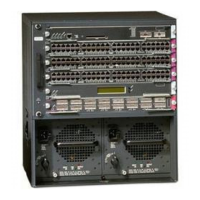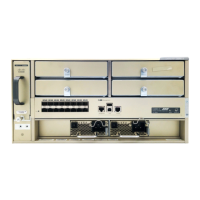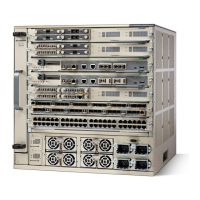8-15
Catalyst 6500 Series Content Switching Module Configuration Note
OL-4612-01
Chapter 8 Configuring Additional Features and Options
Configuring Network Management
The following HTTP headers are supported:
• Content-Length (non-zero value required for all POSTs)
• Connection (close value indicates that request should not be persistent)
• WWW-Authenticate (sent to client when credentials are required and missing)
• Authorization (sent from client to specify Basic credentials in base64 encoding)
For the XML feature to operate, the network management system must connect to a CSM IP address, not
a switch interface IP address.
Because the master copy of the configuration must be stored in Cisco IOS, as it is with the command
line interface, when XML configuration requests are received by the CSM, these requests must be sent
to the supervisor engine.
Note XML configuration allows a single CSM to act as proxy for all the CSMs in the same switch chassis. For
example, an XML page with configuration for one CSM may be successfully posted through a different
CSM in the same switch chassis.
The Document Type Description (DTD), now publicly available, is the basis for XML configuration
documents you create. (See Appendix C, “CSM XML Document Type Definition.”) The XML
documents are sent directly to the CSM in HTTP POST requests. To use XML, you must create a
minimum configuration on the CSM in advance, using the Cisco IOS command line interface. Refer to
the Catalyst 6500 Series Content Switching Module Command Reference for information on the
xml-config command.
The response is an XML document mirroring the request with troublesome elements flagged with
child-error elements, and with an error code and error string. You can specify which types of errors
should be ignored by using an attribute of the root element in the XML document.
There will be an addition to the Cisco IOS command line interface for enabling XML configuration
capabilities for a particular CSM interface. Along with the ability to enable and disable the TCP port,
security options for client access lists and HTTP authentication are supported.
To configure XML on the CSM, perform this task:
501 Not Implemented (“POST” not specified)
505 HTTP Version not supported (“1.0” or “1.1” not specified)
Table 8-2 HTTP Return Codes for XML (continued)
Return Code Description
Command Purpose
Step 1
Router(config-module-csm)# module csm
slot
Specifies the module and slot number.
Step 2
Router(config-module-csm)# xml-config
Enables XML on the CSM and enters the XML
configuration mode.
Step 3
Router(config-slb-xml)# port
port-number
Specifies the TCP port where the CSM HTTP server
listens.
Step 4
Router(config-slb-xml)# vlan
id
Restricts the CSM HTTP server to accept connections
only from the specified VLAN.

